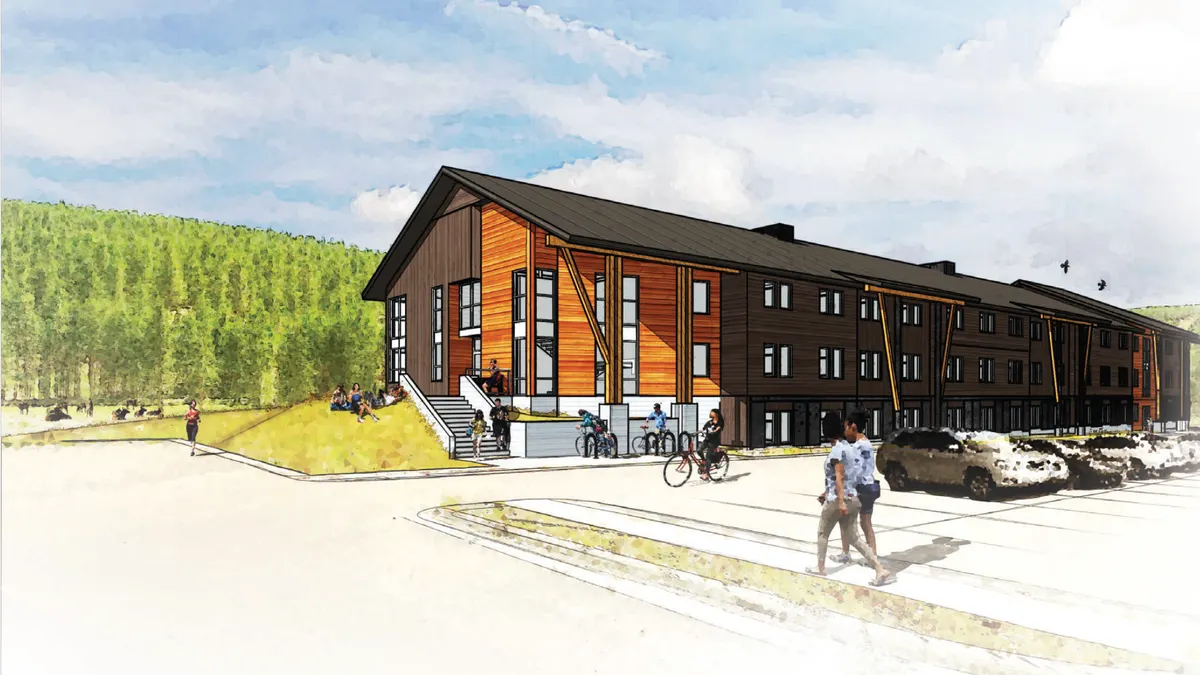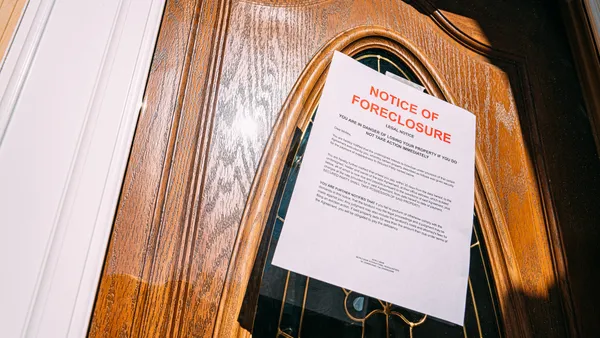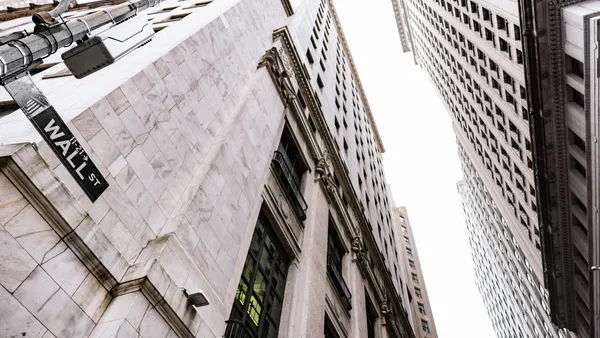Dive Brief:
- Multifamily lending is expected to drop 14% to $375 billion in 2023, according to the Mortgage Bankers Association’s updated baseline forecast released last week.
- The slowdown should not last long, however. The MBA expects mortgage lending to rebound to $456 billion in 2024. By comparison, it hit $437 billion in 2022.
- Multifamily isn’t the only commercial real estate sector expected to decline dramatically this year. Total commercial and multifamily mortgage borrowing and lending is slated to fall to $654 billion — a 20% decline from $816 billion in 2022. However, those numbers should rebound to $829 billion in 2024, according to the MBA.
Dive Insight:
Despite the failures of Silicon Valley Bank and Signature Bank in the first quarter of 2023, banks still led the way for commercial loans, financing 41.1% of non-agency loan volume, according to a separate report from CBRE. In Q4 2022, they handled 58%.
About one-third of bank loans in the first quarter of 2023 were for new construction. The remainder was split between acquisition loans and refinancing, according to CBRE. But developers say it's getting much more difficult to secure construction loans.
“Construction debt is hard to get,” said Matt Enzler, senior managing director for the North Texas division of Dallas-based developer Trammell Crow Residential, the nation’s No. 5 largest builder in 2022, according to the National Multifamily Housing Council.
Banks have become very picky — focusing on developers they have established relationships with, he said.
“For some of the best borrowers, the biggest borrowers or the more established guys that have guarantees and are willing to put equity in, there is still money available,” Enzler said. “But it's certainly not like it was the last few years before [the interest rate increases] last year.”
LTVs move past 60%
Multifamily loan-to-values moved up to 60.9% in Q1 from 59.5% in Q4 2022, according to CBRE. But they were 2.2 percentage points lower than a year ago. Spreads on apartment loans tightened by 8 basis points to 170.
Rachel Vinson, president of the U.S. Debt & Structured Finance group for Capital Markets at CBRE, blamed Q1’s market uncertainty on the Federal Reserve’s aggressive rate hikes.
“While plenty of debt capital remains available, increased borrowing costs coupled with credit tightening continues to put downward pressure on lending activity,” Vinson said in a press release shared with Multifamily Dive. “Borrowers will continue to opt for shorter-term, fixed-rate debt with shortened call protection until volatility begins to normalize.”
Jamie Woodwell, MBA's head of Commercial Real Estate Research, also pointed to higher interest rates, along with uncertainty about property values and questions about the outlook for the cash flows of some properties, as the reasons behind the slowdown in commercial real estate transactions and financing, which started in mid-2022.
"That slowdown is likely to persist through much of this year as investors, lenders and others look for greater transparency into the markets,” Woodwell said in the MBA press release. “We expect maturing loans to begin to break the logjam and provide greater clarity as this year goes on.”
Click here to sign up to receive multifamily and apartment news like this article in your inbox every weekday.









